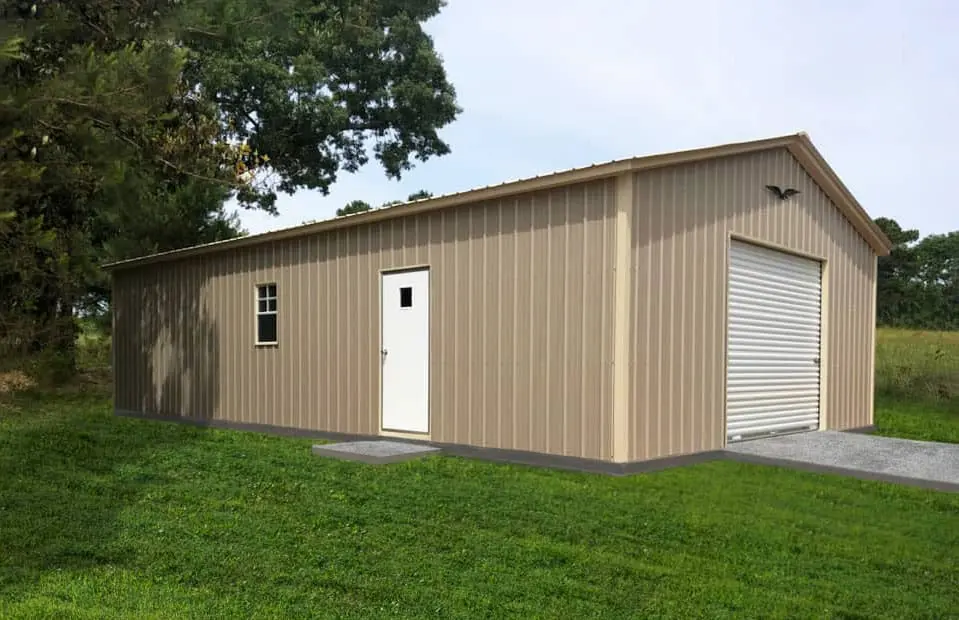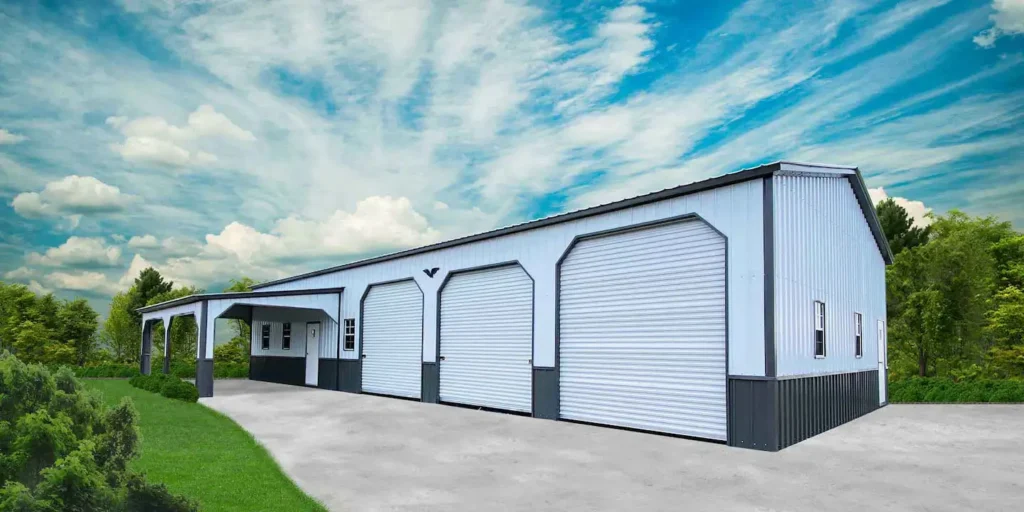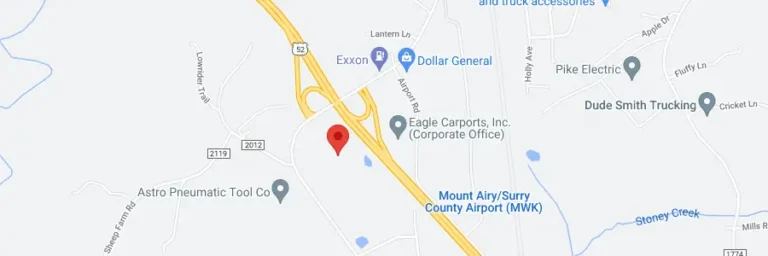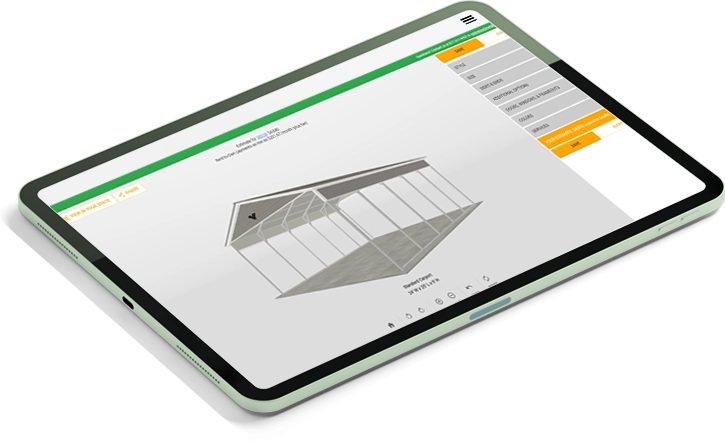RV rooftops are susceptible to the elements because of their flat design. Rain, snow, and…

At Metal Carports, our metal building experts understand the importance of inexpensive metal building insulation options for customers. We are committed to helping you explore the types of insulation available, the key factors to consider when choosing the right insulation for your metal building, and options for metal building insulation that won’t break the bank.
Whether you're building a new metal structure or looking to upgrade an existing one, our contractors want to share their valuable insights to help you make informed decisions about the cheapest way to insulate a metal building.
Why Insulate A Metal Building?
Metal buildings are popular for their long-lasting, heavy-duty, weather-resistant materials. However, a steel building structure can be notoriously difficult to insulate. The lack of proper insulation can lead to a variety of issues such as condensation, excess heat or cold, and higher energy bills.
Energy Efficiency
One of the primary reasons to insulate a metal building is to improve energy efficiency. Metal is a highly conductive material, which means that without insulation, heat and cold can easily pass through it. This can result in excessive energy consumption as HVAC systems work harder to maintain a comfortable indoor temperature. With the right insulation, home and business owners can significantly reduce energy consumption, save money on utility bills, and help protect the environment.
Indoor Air Quality
Insulation of metal structures can help prevent the growth of mold and mildew, which can be detrimental to a person's health. It can also help regulate humidity levels and prevent moisture, which can make a space more comfortable and reduce the risk of respiratory problems such as asthma, allergies, and other conditions that can be negatively impacted by poor indoor air quality.
Temperature Control
Insulating a metal building can also provide better indoor temperature control. In hot climates, insulation can help keep the interior cool, while in colder regions, it can help retain heat. This can result in a more comfortable and functional space year-round, which can be especially beneficial for businesses that require consistent temperature control.
Increase the Value of Your Metal Building
Insulating a metal building can increase its overall value. Proper insulation can make a building more desirable to potential property buyers, as it demonstrates a commitment to energy efficiency, comfort, and durability.

Benefits Of Insulating Your Metal Building
When you have qualified and experienced contractors who specialize in metal building insulation, you can reap the many benefits that come along with protecting a building’s interior.
Some of the benefits of insulating a metal structure include:
- Improved metal structure energy efficiency.
- Better control of the temperature inside the building.
- Reduced condensation and prevention of mold and mildew growth.
- Better metal building moisture control.
- Enhanced indoor air quality.
- Increased noise reduction.
- Metal structures are highly fire-resistant.
- Reduced maintenance costs.
- Increased durability.
- Enhanced aesthetic appeal.
- Faster construction time.
- Compliance with building codes.
Understanding Metal Building Insulation
Metal building insulation is a process of adding a layer of material to the interior or exterior walls, roof, and floor of a metal building to reduce heat transfer and control temperature and moisture levels. Metal buildings have a reputation for being difficult to insulate due to their highly conductive material, which means that they can quickly absorb and transfer heat or cold.
What Factors Should I Consider for Metal Building Insulation?
There are several important factors to consider when choosing insulation for a metal building, such as:
- Climate: The insulation material should be selected based on the climate in the building's geographic location.
- Building use: The type of insulation material used will depend on the intended use of the building. For example, a warehouse may require different insulation than a retail store or office building.
- Building features: From the building's shape and size to the types of wall panels, flat roofs vs high, ventilated roofs, it's important to look at the characteristics of the building. There are many potential features that impact the amount of insulation needed and the type of installation method that is most efficient.
- Energy efficiency: The insulation material should provide good thermal resistance to reduce energy consumption and lower utility bills, even when the seasons change.
- Moisture control: The insulation material should be able to control moisture and prevent condensation to protect the building's structure and improve indoor air quality.
- Fire safety: The insulation material should be fire-retardant and meet local fire codes and regulations.
- Budget: The cost of insulation materials and installation should be considered in relation to the building's overall budget.
- Maintenance: The insulation material should be easy to maintain and repair in case of damage.
- Installation method: The type of insulation material and installation method should be chosen based on the building's design and construction.
- Environmental impact: The insulation material should be chosen with consideration for its impact on the environment, such as its recyclability and energy efficiency.
Considering these factors when choosing insulation for a metal building can help ensure the best insulation solution for the building's specific needs, leading to improved energy efficiency, comfort, and durability. It is important to consult with a professional insulation contractor experienced in steel buildings to determine the best insulation solution for your property.
What Are R-Value, U-Value, and Perm Ratings for Metal Buildings?
R-value, U-value, and Perm ratings are important measurements for evaluating the performance of insulation in metal buildings.
R-Value
R-values measure thermal resistance, or the ability of a material to resist heat transfer. A high R-value makes for increased effectiveness of the insulation at reducing heat transfer. The R-value of insulation in metal buildings can vary depending on the type of material used and the thickness of the insulation. For example, fiberglass insulation may have an R-value of 3.1 per inch of thickness, while spray foam insulation may have an R-value of 6.5 per inch.
U-Value
U-value is a measure of overall heat transfer through a material or building assembly. It is the inverse of the R-value, with a lower U-value indicating better thermal performance. U-value takes into account heat transfer through all components of a building assembly, including walls, roof, windows, and doors. U-value is a comprehensive measure of building performance and takes into account other factors beyond just insulation, such as air leaks and building design.
Perm Rating
Perm rating is a measure of a material's ability to allow water vapor to pass through it. It is an important factor to consider for insulation materials in humid or wet environments. A higher perm rating indicates better moisture permeability. Insulation materials with high perm ratings are usually more breathable, allowing water vapor to pass through and reducing the risk of moisture buildup and mold growth.
Types Of Metal Building Roof Insulation
The choice of insulation material and installation method depends on various factors such as the building's location, climate, and intended use. It is important to consult with a custom metal building insulation contractor to determine the best insulation type for your metal building.
Let’s explore several steel building insulation options for business owners and homeowners looking to insulate their metal carport, metal garage, metal barn, or other metal structure.
Batt and Roll Insulation
This is the most common type of insulation for metal buildings, consisting of fiberglass or mineral wool batts or rolls that are installed between the framing members. This insulation is easy to install, relatively inexpensive, and provides good thermal resistance. However, it may not be suitable for areas with high humidity or moisture levels.
Spray Foam Insulation
This type of insulation is applied directly to the metal surfaces as a liquid, which then expands and hardens to create an airtight and seamless layer of insulation. Spray foam insulation provides excellent thermal resistance, air sealing, and moisture control, but it can be more expensive than other types of insulation and requires professional installation.
Reflective Foil Insulation
Reflective foil insulation provides good thermal resistance and reduces the risk of condensation, but it is less effective in cold climates and does not provide air sealing. This type of insulation is installed on the interior surface of the metal building and is made of a reflective material that reflects radiant heat away from the building.
Rigid Board Insulation
Rigid board insulation is made of foam or fiberboard and is installed on the interior or exterior surface of the metal building. It provides good thermal resistance, moisture control, and air sealing, but it can be more expensive than other types of insulation and requires a professional who is an expert in installing insulation for metal buildings.
Loose-fill Insulation
This type of insulation consists of loose fibers or pellets that are blown into the space between the framing members. Loose-fill insulation provides good thermal resistance and can be used in irregularly shaped spaces, but it may not be suitable for areas with high winds or air movement. Additionally, loose-fill insulation is a good cost-efficient option for metal buildings.
Single-Layer Faced Fiberglass Blanket Insulation
Consisting of a layer of fiberglass insulation that is faced on one side with vapor radiant barriers such as paper or foil. The facing material of single-layer faced fiberglass blanket insulation acts as a vapor barrier to prevent moisture and water from penetrating the insulation, reducing the risk of condensation and mold growth.
Sag and Bag Two-Layer System
The first layer of this two-layer system is an unfaced layer of fiberglass insulation. This layer is installed between the framing members of the metal building, and it provides good thermal resistance to reduce heat transfer. The second layer is faced fiberglass insulation that is installed on top of the first layer and designed to be "sagged and bagged" between the framing members. The facing material is typically a vapor retarder material such as foil or paper, which helps to prevent moisture and water vapor from penetrating the insulation.
Fabric Liner Systems
Fabric Liner Systems are a type of insulation for metal buildings that consists of a layer of insulation material covered by a durable fabric liner. The fabric liner is typically made from vinyl-coated polyester and is stretched and fastened to the framing members of the building. The insulation material is installed behind the liner, and the entire system is designed to create a seamless, durable, and attractive interior finish.
Insulated Metal Panels
Insulated metal panels (IMPs) are a type of insulation for metal buildings that combine an insulation core with a metal exterior and interior facing. The metal facing on both sides of the panel provides durability, weather resistance, and ease of maintenance, while the insulation core provides thermal resistance and energy efficiency.
What is the Most Cost-Effective Way to Insulate a Metal Building?
The most cost-effective way to insulate a metal building will depend on several factors, such as the size of the building, the climate in the building's location, the intended use of the building, and the available budget.
If you are looking for the cheapest way to insulate a metal building, consider the following insulation options:
- Fiberglass batt insulation: The most cost-effective insulation option for metal buildings, fiberglass batt material is widely available, relatively inexpensive, and easy to install.
- Reflective foil insulation: Reflective foil insulation is inexpensive, easy to install, and can be effective in hot climates.
- Loose-fill insulation: A cost-effective option for insulation, this type of material is easy to install and can be used in irregularly shaped spaces.
It is important to consult with an experienced metal structure insulation company to determine the most cost-effective insulation option for your specific metal building. Factors such as the R-value required, the thickness of the insulation material, and the installation method should all be considered when determining the most cost-effective insulation solution.
For The Highest Quality Metal Buildings, Contact Metal Carports Today
Are you interested in exploring your options for insulating your metal building or are you ready to install a new, fully insulated metal building on the property of your home and business?
At Metal Carports, our metal building installation experts have built numerous metal carports, sheds, barns, garages, and other metal structures including the installation of a variety of insulation types.
To learn more about our services or to speak to someone about building an insulated metal building, call us today at 877-517-4422, use our 3D design tool, or fill out our contact form to get started.
"*" indicates required fields


